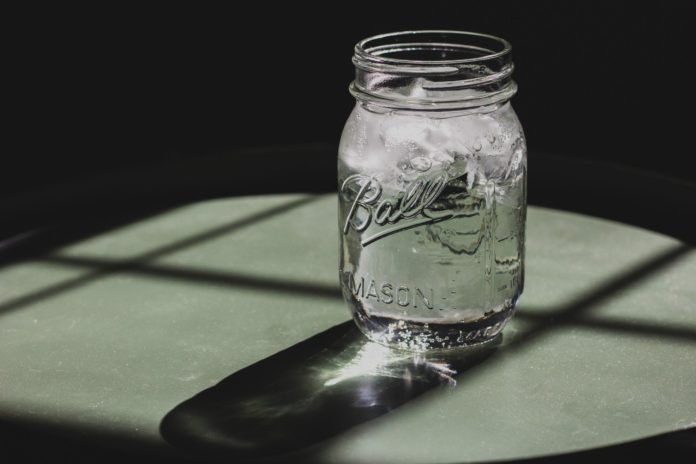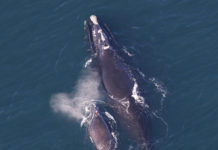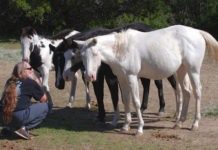The rest of the world can learn from Puerto Rican communities rallying together to recover from a natural disaster fuelled by climate change
Christmas is a big deal in Puerto Rico – celebrations traditionally run from November to February – but festivities are in scant supply at the end of 2017. On a hot and sweaty morning in mid-December, Pablo Méndez Lázaro and a band of volunteers are delivering not Christmas presents but essential filtration systems, food and medical supplies in the eastern interior of the island. At each house, the volunteers show residents how to purify the water they’ve collected in their backyards.
From the filter pouch, through the tubing, into the plastic bottle below. A basic act of alchemy transforms the contents of rain buckets, muddied by mosquitoes and sipped by any number of cats, into water fit to drink, clean wounds or even just wash dishes.
“Water is life,” says Méndez Lázaro, who has demonstrated this trick hundreds of times in the preceding weeks. “For a few months we can live without hospitals, without shopping centres, but, without water, no one can live.”

Water was in no short supply on 20 September 2017, when Category 4 Hurricane Maria cut like a buzz-saw across the island. The storm ditched two to three feet of rain, flooding houses and hospitals, while raging winds tore roofs off houses and electrical transmission towers from the ground, plunging the island into darkness.
Climate change may have played a role in the disaster – warmer ocean temperatures generally feed stronger storms. But even before the hurricane, exceptionally hot days, air pollution and sea-level rise – all symptoms of a changing climate – had already been taking their toll on the islanders’ health and financial stability.
Good journalism matters – because the world isn’t all bad.
The catastrophe in Puerto Rico may therefore be a worrying harbinger of a future for other countries and regions facing the effects of climate change. How the island’s recovery unfolds, and whether Puerto Ricans are able to rebuild so they might withstand future extreme events, could hold valuable lessons for the world as a whole.
Here, it is grassroots groups of volunteers who are pulling the island out of its crisis and carrying out the day-to-day fundamentals of the recovery response. The hurricane has taken its toll in a myriad of ways across Puerto Rico, but individual communities know best where their weaknesses and strengths lie and how to respond. Their example shows that, when it comes to preparing for and adapting to climate change, it might just take a village.
Hurricane Maria hit early in the morning on the south-eastern side of the island, near the harbour at Yabucoa. Winds that sometimes peaked as high as 120 miles per hour flattened some houses and tore the roofs and doors off others.
How the island’s recovery unfolds, and whether Puerto Ricans are able to rebuild so they might withstand future extreme events, could hold valuable lessons for the world as a whole
“One of the most striking effects was the sound,” says William Gould, director of the US Department of Agriculture’s Caribbean Climate Hub, whose cement house is on the east side of the island. “It was a whistling sound, like a cat wailing or a freight train. And it was not a storm that came in gusts. It was just sustained, unrelenting.”
Gould’s house began to vibrate. Concerned about the windows blowing in, Gould and his wife put their nine-year-old son in the shower with a flashlight and toys and sat in a windowless passageway to wait out the storm.
While the winds sounded like jet engines, the storm itself travelled slowly. Over 50 miles wide, it ambled across the island like a voracious monster eating everything in its path. It spent the morning hovering over the mountainous regions, drenching them in feet of rain until the waterlogged soil began to slide down the hillsides, crushing houses and burying roads.
The fifth-strongest storm to ever hit the USA and the deadliest to pummel Puerto Rico in 80 years, Hurricane Maria decimated the electrical grid and mobile phone networks and flooded hospitals and entire neighbourhoods. The rains triggered more than 40,000 landslides and washed away roads and bridges.
When the sun set on 19 September, Puerto Rico had been a lush, verdant island with abundant forests and farms of coffee, plantains and pineapples. When Gould finally emerged from his house, it was to a different world. No longer a rich palette of many shades of green, the forests and hills appeared a sterile scene of brown and grey. “It was like every leaf had been torn from every tree,” Gould says.

In the immediate aftermath, islanders had to live with no power, no stores, limited fuel for generators and driving, and no way of communicating with the outside world. “You need food and water, and it was pretty scary that they were not available,” Gould says. “What more basic concerns do you have for yourself and your family?”
As the eye of the storm hadn’t passed over the capital, San Juan, the destruction there, although severe, was less than in other parts of the island. Quickly neighbours started helping neighbours, and volunteer groups started to sprout up.
Physician Alfredo Ayala, working with nurses from the mainland, was one of the first responders in many towns. “People were crying for water, people were crying for food and they were helpless,” he says.
The hurricane left the island’s hospitals without electricity, and they also had limited access to generators and fuel to operate lifesaving equipment like haemodialysis machines and ventilators. Many people had to fly to the mainland, if they could, to receive treatment. “A lot of communities didn’t suffer that much because of the hurricane,” Pablo Méndez Lázaro said shortly after the disaster. “But because of the lack of accessibility and lack of infrastructure, they are now totally vulnerable.”
Méndez Lázaro is a professor of environmental health at the Graduate School of Public Health in San Juan. He investigates the impacts of environmental changes on the health of Puerto Ricans.
In 2014, he wrote about the impact of natural hazards on public health systems in tropical areas, warning that government agencies and hospitals needed to prepare for both the gradual impacts of climate change and extreme events such as hurricanes or hot spells, which may become more frequent and intense in a warming climate: “If these systems deteriorate, the population’s welfare and health may be jeopardised.”
Now Méndez Lázaro is a player in his own dire predictions.
His prescience reflects a growing awareness in the scientific and medical community that climate change can have an impact on public health – and it’s already happening. In 2017, the Lancet Countdown, an international research collaboration that tracks progress on health and climate change, released a report documenting a 46 per cent increase in extreme weather events between 2000 and 2016, such as the 2003 heatwave that led to over 70,000 more deaths than expected across Western Europe.
The report also proposed that the rising temperatures associated with climate change have influenced the spread of infectious diseases. Since 1990, reported cases of dengue have doubled every decade. The greenhouse gases that cause climate change also pollute the air, contributing to increasing rates of stroke, heart disease, lung cancer, and chronic and acute respiratory diseases.
Aside from these most obvious impacts, climate change has indirect influences on human health: droughts and floods impact food security, and rising sea levels and storm surges claim people’s homes.
“Climate change is a threat multiplier that undermines all of the basic determinants of public health, from clean air to access to safe drinking water, nutrition, shelter, and freedom from infectious disease,” says Nick Watts, executive director of the Lancet Countdown. “You really can’t turn your head left or right without seeing interactions between this global environmental change and public health.”
Lessons for the rest of the world
If the medical community wants a poster child for the impacts of climate change on health, they need look no further than Puerto Rico. Over the 20th century, average annual air temperatures in the Caribbean islands have gone up by more than half a degree Celsius (more than 1°F), and San Juan experiences an increasing number of extreme heat days each year. These hot spells can cause heat exhaustion or heatstroke in even the healthiest individuals, but in vulnerable people they can exacerbate cardiovascular disease, diabetes-related conditions and respiratory diseases such as asthma. Children in Puerto Rico have the highest rates of asthma in the US.
Like islands in the South Pacific, Puerto Rico has seen the sea rise by more than 6 inches since 1880, and that could reach 22 inches by 2060. As the island is relatively flat near the ocean, rising sea levels could lead to a retreat of the coastline of up to one metre a year. Houses, roads and fields will flood; seawater will inundate the freshwater supply. Severe storms and hurricanes have caused nearly 80 floods on the island in the last 25 years. With flooding comes an increased risk of infections carried by insects as well as contaminated food and water.

By July 2016, more than 5,500 people in Puerto Rico had tested positive for the Zika virus, which is spread by mosquitoes and causes severe birth defects in developing foetuses. The epidemic appeared to be over before Maria hit. But health officials are now concerned that pools of stagnant water that formed after the hurricane could provide a perfect breeding ground for mosquitoes and cause an uptick in Zika and dengue. Even before the disaster, Méndez Lázaro’s research had warned that warmer temperatures and higher sea levels made for more dengue transmission in San Juan.
At the beginning of 2017, Puerto Ricans were already the US’s poorest citizens, with a child poverty rate of 58 per cent. The island carried about $74bn (£52bn) of crushing debt and a tenth of the population had relocated to the mainland since 2007; in 2016, doctors were leaving at a rate of nearly two every day. By the summer of 2017, Puerto Ricans were in no position to maintain their ageing power company, and it declared bankruptcy in July. Power outages were already common.
“Maria didn’t cause everything. Maria just revealed to the world how we are living,” Méndez Lázaro says. “For us in academia, it was not surprising to see that we have a lot of people suffering and we have misery, we have poverty, disabilities and chronic disease.”
The volunteering day starts early and, in the dim dawn light, Méndez Lázaro picks me up from Plaza Colón in Old San Juan in his blue Dodge pickup, the back already laden with water bottles and filters. At the plaza’s centre stands a tall statue of Christopher Columbus, who arrived in Puerto Rico in 1493. For the next 400 years it was an overseas province of Spain before becoming a US territory with a population today of 3.3 million.
It takes time to drive out of San Juan – many of…










